trimethyl(phenylethynyl)tin
Modify Date: 2024-01-11 08:49:29
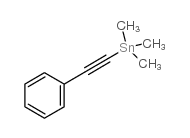
trimethyl(phenylethynyl)tin structure
|
Common Name | trimethyl(phenylethynyl)tin | ||
|---|---|---|---|---|
| CAS Number | 1199-95-7 | Molecular Weight | 264.93000 | |
| Density | N/A | Boiling Point | 249ºC at 760 mmHg | |
| Molecular Formula | C11H14Sn | Melting Point | 62-67ºC | |
| MSDS | Chinese USA | Flash Point | 105.9ºC | |
| Symbol |


GHS06, GHS09 |
Signal Word | Danger | |
| Name | trimethyl(2-phenylethynyl)stannane |
|---|---|
| Synonym | More Synonyms |
| Boiling Point | 249ºC at 760 mmHg |
|---|---|
| Melting Point | 62-67ºC |
| Molecular Formula | C11H14Sn |
| Molecular Weight | 264.93000 |
| Flash Point | 105.9ºC |
| Exact Mass | 266.01200 |
| LogP | 2.91550 |
| Appearance of Characters | solid |
| Vapour Pressure | 0.0372mmHg at 25°C |
Synonym: Section 2 - COMPOSITION, INFORMATION ON INGREDIENTS
Risk Phrases: 26/27/28 36/37/38 50/53 Section 3 - HAZARDS IDENTIFICATION EMERGENCY OVERVIEW
Very toxic by inhalation, in contact with skin and if swallowed. Irritating to eyes, respiratory system and skin. Very toxic to aquatic organisms, may cause long-term adverse effects in the aquatic environment. Potential Health Effects Eye: Causes eye irritation. Skin: Causes skin irritation. Toxic in contact with skin. Ingestion: May cause irritation of the digestive tract. Poison by ingestion. Inhalation: Causes respiratory tract irritation. Toxic if inhaled. Chronic: Not available. Section 4 - FIRST AID MEASURES Eyes: Immediately flush eyes with plenty of water for at least 15 minutes, occasionally lifting the upper and lower eyelids. Get medical aid immediately. Skin: Get medical aid immediately. Immediately flush skin with plenty of water for at least 15 minutes while removing contaminated clothing and shoes. Ingestion: Get medical aid immediately. Wash mouth out with water. Inhalation: Get medical aid immediately. Remove from exposure and move to fresh air immediately. If not breathing, give artificial respiration. If breathing is difficult, give oxygen. Notes to Physician: Section 5 - FIRE FIGHTING MEASURES General Information: As in any fire, wear a self-contained breathing apparatus in pressure-demand, MSHA/NIOSH (approved or equivalent), and full protective gear. Extinguishing Media: Use water spray, dry chemical, carbon dioxide, or chemical foam. Section 6 - ACCIDENTAL RELEASE MEASURES General Information: Use proper personal protective equipment as indicated in Section 8. Spills/Leaks: Vacuum or sweep up material and place into a suitable disposal container. Section 7 - HANDLING and STORAGE Handling: Do not breathe dust, vapor, mist, or gas. Do not get in eyes, on skin, or on clothing. Use only in a chemical fume hood. Storage: Store in a cool, dry place. Store in a tightly closed container. Section 8 - EXPOSURE CONTROLS, PERSONAL PROTECTION Engineering Controls: Use adequate ventilation to keep airborne concentrations low. Exposure Limits CAS# 1199-95-7: United Kingdom, WEL - TWA: (listed as tin organic compounds): 0.1 mg/m3 TWA (except cyhexatin, as Sn) United Kingdom, WEL - STEL: (listed as tin organic compounds): 0. mg/m3 STEL (except cyhexatin, as Sn) United States OSHA: 0.1 mg/m3 TWA (as Sn) (listed under Tin orga compounds). Belgium - TWA: (listed as tin organic compounds): 0.1 mg/m3 VLE ( Sn) Belgium - STEL: (listed as tin organic compounds): 0.2 mg/m3 VLE Sn) France - VME: (listed as tin organic compounds): 0.1 mg/m3 VME (a Sn) France - VLE: (listed as tin organic compounds): 0.2 mg/m3 VLE (a Sn) Germany: (listed as tin organic compounds): 0.1 mg/m3 VME (as Sn) Germany: (listed as tin organic compounds): Skin absorber Malaysia: (listed as tin organic compounds): 0.1 mg/m3 TWA (as Sn Netherlands: (listed as tin organic compounds): 0.2 mg/m3 STEL (a Sn) Netherlands: (listed as tin organic compounds): 0.1 mg/m3 MAC (as Spain: (listed as tin organic compounds): 0.1 mg/m3 VLA-ED (as Sn Spain: (listed as tin organic compounds): 0.2 mg/m3 VLA-EC (as Sn Personal Protective Equipment Eyes: Not available. Skin: Wear appropriate protective gloves to prevent skin exposure. Clothing: Wear appropriate protective clothing to prevent skin exposure. Respirators: Follow the OSHA respirator regulations found in 29 CFR 1910.134 or European Standard EN 149. Use a NIOSH/MSHA or European Standard EN 149 approved respirator if exposure limits are exceeded or if irritation or other symptoms are experienced. Section 9 - PHYSICAL AND CHEMICAL PROPERTIES Physical State: Crystalline powder Color: white to light beige Odor: Not available. pH: Not available. Vapor Pressure: Not available. Viscosity: Not available. Boiling Point: Not available. Freezing/Melting Point: Not available. Autoignition Temperature: Not available. Flash Point: Not available. Explosion Limits, lower: Not available. Explosion Limits, upper: Not available. Decomposition Temperature: Solubility in water: Specific Gravity/Density: Molecular Formula: C11H14Sn Molecular Weight: 264.92 Section 10 - STABILITY AND REACTIVITY Chemical Stability: Stable. Conditions to Avoid: Incompatible materials. Incompatibilities with Other Materials: Strong oxidizing agents. Hazardous Decomposition Products: Carbon monoxide, carbon dioxide, tin/tin oxides. Hazardous Polymerization: Will not occur. Section 11 - TOXICOLOGICAL INFORMATION RTECS#: CAS# 1199-95-7 unlisted. LD50/LC50: Not available. Carcinogenicity: Trimethyl(phenylethynyl)tin - Not listed by ACGIH, IARC, or NTP. Section 12 - ECOLOGICAL INFORMATION Section 13 - DISPOSAL CONSIDERATIONS Dispose of in a manner consistent with federal, state, and local regulations. Section 14 - TRANSPORT INFORMATION IATA Shipping Name: Organotin compound, solid, n.o.s.* Hazard Class: 6.1 UN Number: 3146 Packing Group: II IMO Shipping Name: Organotin compound, solid, n.o.s. Hazard Class: 6.1 UN Number: 3146 Packing Group: II RID/ADR No information available. Section 15 - REGULATORY INFORMATION European/International Regulations European Labeling in Accordance with EC Directives Hazard Symbols: T+ N Risk Phrases: R 26/27/28 Very toxic by inhalation, in contact with skin and if swallowed. R 36/37/38 Irritating to eyes, respiratory system and skin. R 50/53 Very toxic to aquatic organisms, may cause long-term adverse effects in the aquatic environment. Safety Phrases: S 26 In case of contact with eyes, rinse immediately with plenty of water and seek medical advice. S 27 Take off immediately all contaminated clothing. S 28A After contact with skin, wash immediately with plenty of water. S 45 In case of accident or if you feel unwell, seek medical advice immediately (show the label where possible). S 60 This material and its container must be disposed of as hazardous waste. S 61 Avoid release to the environment. Refer to special instructions/safety data sheets. WGK (Water Danger/Protection) CAS# 1199-95-7: No information available. Canada None of the chemicals in this product are listed on the DSL/NDSL list. CAS# 1199-95-7 is not listed on Canada's Ingredient Disclosure List. US FEDERAL TSCA CAS# 1199-95-7 is not listed on the TSCA inventory. It is for research and development use only. SECTION 16 - ADDITIONAL INFORMATION N/A |
| Symbol |


GHS06, GHS09 |
|---|---|
| Signal Word | Danger |
| Hazard Statements | H300-H310-H330-H410 |
| Precautionary Statements | P260-P264-P273-P280-P284-P301 + P310 |
| Personal Protective Equipment | dust mask type N95 (US);Eyeshields;Faceshields;Gloves;type P2 (EN 143) respirator cartridges |
| Hazard Codes | T+: Very toxic;N: Dangerous for the environment; |
| Risk Phrases | R26/27/28;R50/53 |
| Safety Phrases | S26-S27-S28-S45-S60-S61 |
| RIDADR | UN 3146 |
| WGK Germany | 2 |
| HS Code | 2931900090 |
| Precursor 10 | |
|---|---|
| DownStream 10 | |
| HS Code | 2931900090 |
|---|---|
| Summary | 2931900090. other organo-inorganic compounds. VAT:17.0%. Tax rebate rate:13.0%. Supervision conditions:AB(certificate of inspection for goods inward,certificate of inspection for goods outward). MFN tariff:6.5%. General tariff:30.0% |
| MFCD00239505 |
| 1-trimethylstannyl-2-phenylacetylene |
| Trimethyl(phenylethynyl)tin |
| trimethylstannyl phenylacetylene |
| (phenylethynyl)trimethylstannane |
| trimethyl(phenylethynyl)stannane |
| 1-(trimethylstannyl)-2-phenylethyne |
| Stannane,trimethyl(2-phenylethynyl) |
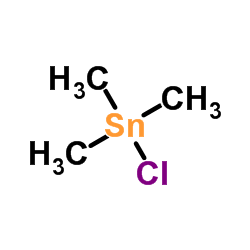 CAS#:1066-45-1
CAS#:1066-45-1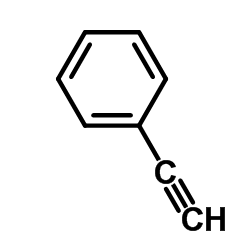 CAS#:536-74-3
CAS#:536-74-3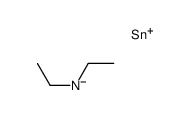 CAS#:1068-74-2
CAS#:1068-74-2 CAS#:993-50-0
CAS#:993-50-0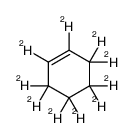 CAS#:16035-50-0
CAS#:16035-50-0 CAS#:17946-71-3
CAS#:17946-71-3 CAS#:4440-01-1
CAS#:4440-01-1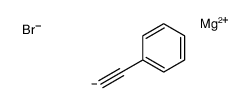 CAS#:6738-06-3
CAS#:6738-06-3 CAS#:16643-09-7
CAS#:16643-09-7 CAS#:932-87-6
CAS#:932-87-6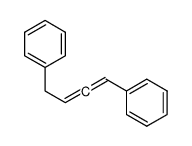 CAS#:141821-06-9
CAS#:141821-06-9 CAS#:661-69-8
CAS#:661-69-8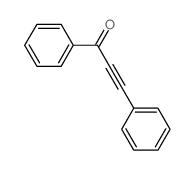 CAS#:7338-94-5
CAS#:7338-94-5 CAS#:811-73-4
CAS#:811-73-4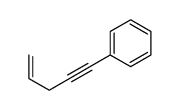 CAS#:4289-20-7
CAS#:4289-20-7 CAS#:772-62-3
CAS#:772-62-3 CAS#:87384-87-0
CAS#:87384-87-0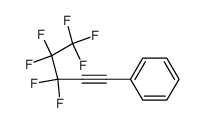 CAS#:81674-08-0
CAS#:81674-08-0 CAS#:1066-44-0
CAS#:1066-44-0